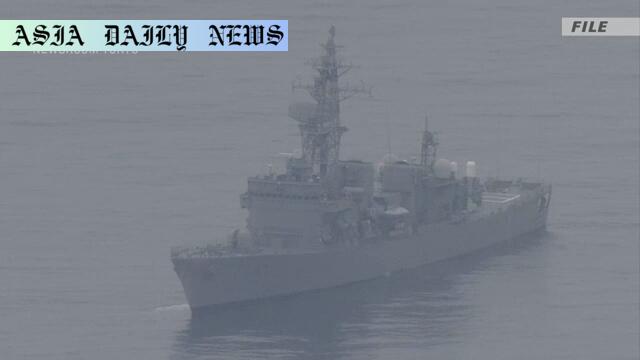Destroyer Escorts: Philippine Navy to inspect Japan’s retired vessels.
The Philippine Navy will send experts to Japan to evaluate destroyer escorts.
Japan has previously provided patrol ships and radar systems to the Philippines.
This acquisition aligns with strengthening the South China Sea dispute defense.
The initiative reflects deepening military ties between both nations.

The Significance of Destroyer Escorts for the Philippine Navy
The Philippine Navy has announced plans to send a team of specialists to Japan next month to explore the feasibility of acquiring Abukuma-class destroyer escorts. These vessels, currently serving Japan’s Maritime Self-Defense Force, are earmarked for retirement, presenting an opportunity for the Philippines to strengthen its fleet with assets possessing advanced anti-surface and anti-submarine warfare capabilities. With the nation’s geographical setting as an archipelago, securing well-equipped navy assets is central to the Philippine Navy’s ‘Comprehensive Archipelagic Defense Concept’ strategy. By acquiring these ships, the Philippines could enhance its maritime security, especially in the contested regions of the South China Sea.
Deepening Defense Relations Between Japan and the Philippines
Over the years, Japan has emerged as a significant defense partner for the Philippines. Following its defense equipment transfer principle, Japan has previously delivered 12 patrol ships and air surveillance radar systems to bolster Philippine defense. However, the transfer of destroyer escorts signifies a leap in defense cooperation, as such vessels are equipped with significantly higher lethal capabilities. The increase in these exchanges highlights not only the growing defense collaboration between the two nations but also a shared endeavor to promote stability in the Asia-Pacific region, where territorial disputes and rising tensions have become pressing concerns.
Strategic Implications in the South China Sea Disputes
Acquiring these destroyer escorts carries immense strategic significance for the Philippines in light of its ongoing territorial disputes with China in the South China Sea. These waters, a globally significant trade route and a hotspot for potential conflict, have seen aggressive territorial claims from China, affecting neighboring nations, including the Philippines. Strengthening the navy with destroyer escorts would provide the Philippines with enhanced maritime deterrence capabilities, increased vigilance over its exclusive economic zones, and a counter-strategy to China’s naval assertiveness in the region.
Challenges and Potential Advantages
Despite the promising prospects of this acquisition, it does not come without challenges. Financial considerations, upkeep, and modernization of such advanced vessels could impose significant pressures on the Philippine defense budget. Additionally, integrating Japanese technology with existing infrastructure would require substantial adjustments and training. On the flip side, the procurement of these destroyer escorts could place the Philippines in a stronger position diplomatically, fostering goodwill from allies such as the United States and Japan, which advocate for a free and open Indo-Pacific. It would also signal the country’s commitment to defending its sovereignty and maintaining regional balance.
Looking to a Stronger Maritime Future
As the Philippine Navy takes proactive steps to evaluate and potentially acquire Japan’s destroyer escorts, the move underscores the nation’s aspirations for hardened maritime defenses and reinforced sovereignty over its waters. It reflects a broader trend in Asia-Pacific nations recalibrating their defense strategies in an ever-changing geopolitical environment marked by challenges like territorial disputes, resource competition, and regional power dynamics. The acquisition and deployment of these ships could secure the Philippines a pivotal role in maintaining regional peace and stability, while also heralding in modern advancements for its naval capabilities.
Commentary
A Strategic Move Amid Rising Tensions
In the face of increasing territorial challenges in the South China Sea, the Philippines’ decision to consider acquiring Japanese destroyer escorts is both timely and strategic. This move signals a practical understanding of the dynamics at play in ensuring maritime sovereignty, especially given the continuous assertiveness of China in the region. These destroyer escorts come with the sophisticated capabilities required to address modern maritime threats, setting the stage for the Philippine Navy to operate as a more formidable force in protecting its territorial waters and exclusive economic zones.
Japan-Philippines Defense Cooperation: A Model Partnership
Japan’s willingness to transfer not just assistance but also enhanced military assets like destroyer escorts highlights the strengthening of its defense collaboration with the Philippines. The relationship is evolving into a mutual partnership, forging not only strong defense ties but also shared values of maintaining peace and stability in the Asia-Pacific. In a region laden with political complexities, such partnerships serve as a reminder of the importance of multilateral cooperation.
Navigating Budget and Technological Concerns
While the acquisition of these destroyer escorts appears promising, it raises practical considerations on budgetary strain and technological integration. Modern naval assets, particularly those as sophisticated as Japanese destroyer escorts, require extensive maintenance, operational adaptability, and manpower training. However, these challenges can be addressed over time with the commitment and support of Japan and other allied regions. Investing in this endeavor is nonetheless a capital-intensive exercise but one that promises long-term dividends for national security.
Final Thoughts on Regional Balance
The move to strengthen the Philippine Navy with destroyer escorts is not just about expanding military might; it signifies a broader intent to contribute to a balanced power distribution in the Asia-Pacific. This acquisition, if it materializes, will serve as a critical step for the Philippines in staking its claim in turbulent waters while fostering resilience to external pressures. Moreover, it serves as a visible symbol of the nation’s commitment to solidarity with allies and to upholding a rules-based maritime order.



